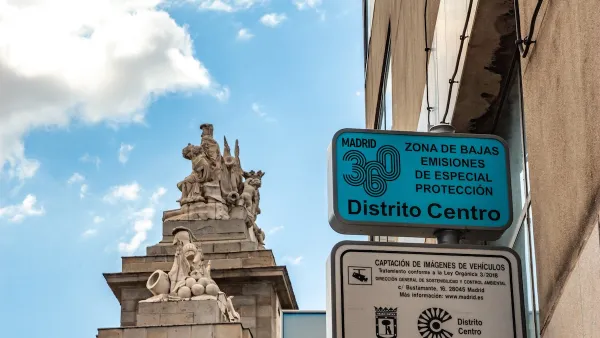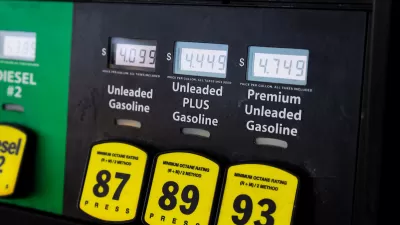With Manhattan's new Second Avenue subway expected to cost five times as much as comparable projects in Europe and Asia, Stephen Smith looks to transit-construction practices from abroad for lessons on how to contain costs in America.
New York City is not alone in paying outrageous prices for new rail infrastructure. As Smith notes, the "$151 billion master plan for
basic high-speed rail service in the Northeast corridor is more
expensive than Japan's planned magnetic levitating train line
between Tokyo and Osaka, most of which is to be buried deep
underground, with tunnels through the Japan Alps and beneath its
densest cities."
So what makes transit so expensive to build in the U.S. compared with developed cities in Europe and Asia? Smith looks to Spain, which "has the most
dynamic tunneling industry in the world and the lowest costs," for some lessons. "In
2003, Metro de Madrid Chief Executive Officer Manuel Melis
Maynar wrote a list describing the practices he used to design
the system's latest expansion. The don't-do list, unfortunately,
reads like a winning U.S. transit-construction bingo card."
Among the obstacles to reducing costs in the U.S. identified by Smith are the slow pace of construction, complex and outdated legal requirements and procurement rules, conflicts of interest, and a lack of effective incentives and oversight.
FULL STORY: U.S. Taxpayers Are Gouged on Mass Transit Costs

Maui's Vacation Rental Debate Turns Ugly
Verbal attacks, misinformation campaigns and fistfights plague a high-stakes debate to convert thousands of vacation rentals into long-term housing.

Planetizen Federal Action Tracker
A weekly monitor of how Trump’s orders and actions are impacting planners and planning in America.

San Francisco Suspends Traffic Calming Amidst Record Deaths
Citing “a challenging fiscal landscape,” the city will cease the program on the heels of 42 traffic deaths, including 24 pedestrians.

Defunct Pittsburgh Power Plant to Become Residential Tower
A decommissioned steam heat plant will be redeveloped into almost 100 affordable housing units.

Trump Prompts Restructuring of Transportation Research Board in “Unprecedented Overreach”
The TRB has eliminated more than half of its committees including those focused on climate, equity, and cities.

Amtrak Rolls Out New Orleans to Alabama “Mardi Gras” Train
The new service will operate morning and evening departures between Mobile and New Orleans.
Urban Design for Planners 1: Software Tools
This six-course series explores essential urban design concepts using open source software and equips planners with the tools they need to participate fully in the urban design process.
Planning for Universal Design
Learn the tools for implementing Universal Design in planning regulations.
Heyer Gruel & Associates PA
JM Goldson LLC
Custer County Colorado
City of Camden Redevelopment Agency
City of Astoria
Transportation Research & Education Center (TREC) at Portland State University
Jefferson Parish Government
Camden Redevelopment Agency
City of Claremont





























